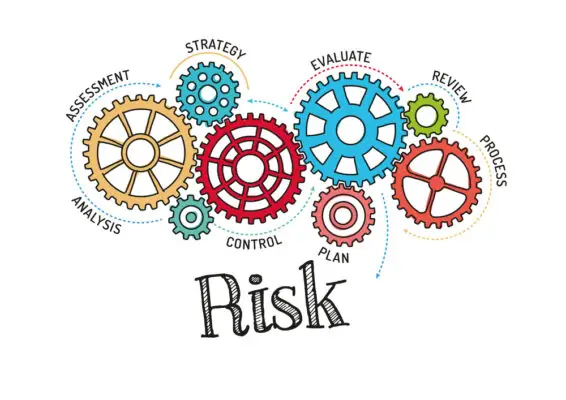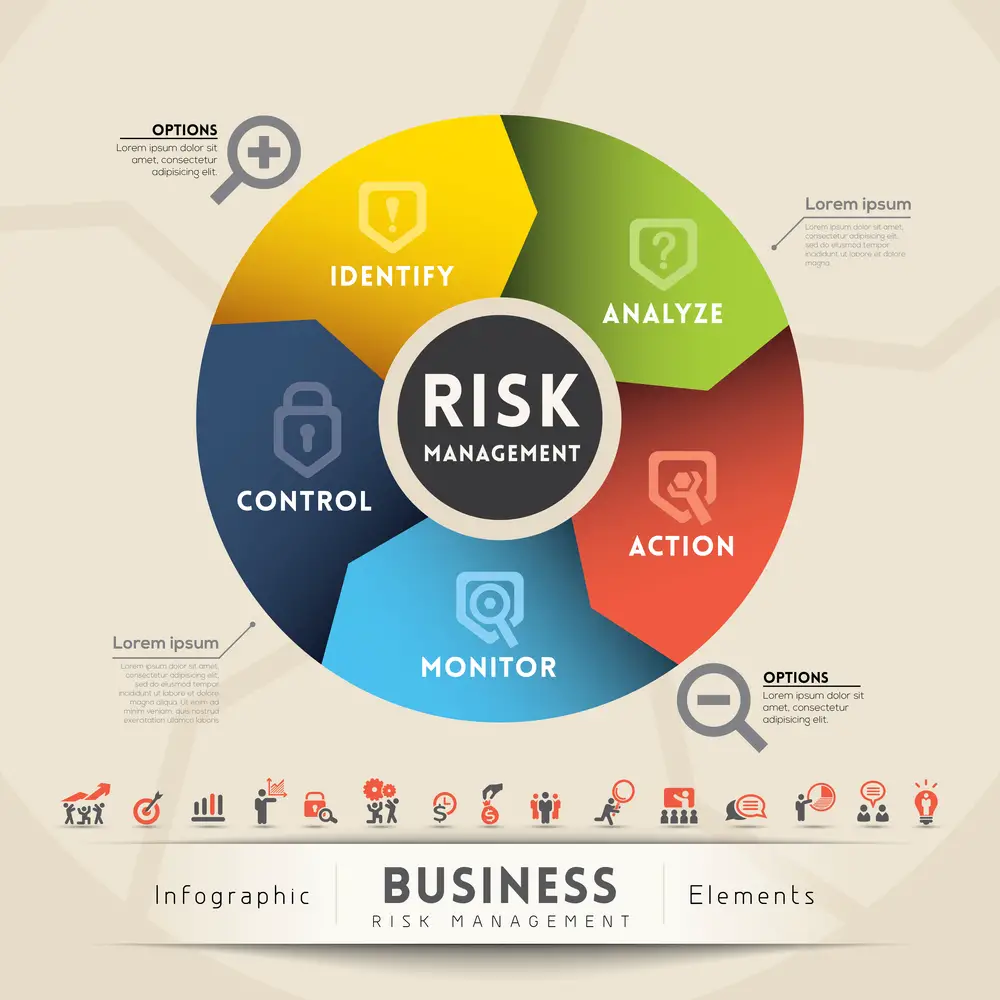Enterprise risk management (ERM) is a systematic process that helps organizations identify, assess, and manage risks that could potentially impact the achievement of their objectives. ERM provides a framework for proactively managing risk and developing an organization-wide risk management culture.
An effective ERM program can help companies:
– Achieve strategic objectives
– Protect and enhance shareholder value
– Improve operational efficiency
– Strengthen stakeholder confidence
– Reduce insurance costs
Helps Companies Achieve Strategic Objectives
A well-designed ERM program can help companies achieve their strategic objectives in several ways. First, by identifying and assessing risks that could potentially impact the achievement of these objectives, companies can develop mitigation strategies to reduce the likelihood or impact of these risks.
For example, if a company’s strategic objective is to expand into new markets, ERM can help identify the risks associated with this expansion and develop strategies to mitigate these risks. Second, ERM can help companies allocate resources more effectively by prioritizing risks and identifying those that require the most attention.
And third, ERM can help companies make better decisions by providing decision-makers with an understanding of the potential impacts of risks on company objectives.
ERM Protects and Enhances Shareholder Value
ERM can also help protect and enhance shareholder value in several ways. First, by identifying and managing risks that could negatively impact the company’s financial performance, ERM can help protect shareholder value from these risks.
For example, if a company is considering expanding into a new market, ERM can help identify the financial risks associated with this expansion and develop strategies to mitigate these risks. Second, by identifying opportunities that could positively impact the company’s financial performance, ERM can help enhance shareholder value by taking advantage of these opportunities.
For example, if a company is considering expanding into a new market, ERM can help identify potential growth opportunities and develop strategies to capitalize on these opportunities. In short, ERM provides a framework for managing risk to help protect and enhance shareholder value. Risk management integration in the organization assists with enhancing value.
Enterprise risk management involves systematically identifying and managing the company’s risk management strategies. The ERM examines the risks of a company from a strategic perspective. Therefore, the risk management process involves leadership-level decisions.
The responsibility for managing risk does not fall within individual departments. Instead, leadership in a given organization will examine the teams from a business perspective, and those expectations will be determined accordingly. Unlike a “silo approach” to risk management, ERM is unique.
Enterprise Risk Management is a methodology that focuses on the risk management strategy for organizations. The top-down strategy involves identifying, measuring, and preparing for potential losses and dangers.

Today’s business organizations face many challenges that affect operational efficiency and compliance. Simply being aware does not make us more aware of this threat. The risk must come into the right hands: managing, controlling, accepting, or transferring the risk if the situation changes.
This is where enterprise risk management (ERM) comes into play. It assists in reducing risk and, in some instances, minimizes risk for your business. It is possible to identify various types of threats, such as operational, financial, or strategic threats, along with other threats, such as reputation and security risks.
A holistic approach to Risk Management
Currently, the business faces numerous risks, which can vary. Historically, companies typically manage risk through division managers managing their own businesses. Risk assessment in enterprises requires companies to identify the risks they face. Great Enterprise risk management framework is holistic to the whole organization.
Similarly, managers determine the risks they want actively managed, rather than dividing risk across companies. Each ERM business unit has its own business plan and examines how the risks for the different business units interact. It also detects possible risk factors which cannot be detected for a single unit alone.
Components of Enterprise Risk Management
The COSO enterprise risk management framework outlines eight key elements which outline the ways a business could approach developing its ERM practices. There are various debates between COSO ERM and ISO 31000 standards.
Monitoring
Companies often consult with internal committees to assess the effectiveness of policies and procedures. This may involve evaluating actual actions compared to the suggestions in policies documenting the process. Monitoring risks and significant risks identified through the erm process.
Moreover, it may mean gathering company information and assisting management in preventing unprotectable risks. The company must also be prepared to analyze the environment of the EMR and make changes if needed. In 2004, the COSO board issued the ERM framework that is widely adopted today.
Objectives
As companies define their objectives, they need to set aims for their mission to achieve that goal in the future. These goals need to match the risk appetite of the company. An ambitious business with a long-term strategy should understand that these lofty goals pose an external risk and that such risks can arise internally or externally.
The company can therefore align its plans to attract regulators to areas of growth that they are currently unfamiliar with. Strategic initiatives identified will create a competitive advantage.
Risk assessment
In conjunction with knowing the potential for events, the ERM framework details steps in the assessment process to determine risk through the analysis. This includes direct risks (e.g., a natural disaster renders an office inoperable) and residual risks (e.g., employees could not return to their offices unless injured or injured).
The framework encourages businesses to assess the risk in terms of the percentage change in event and dollar impact of an event. Traditional risk management and enterprise risk management process will be identifying risks through key risk indicators and monitor risk response.

Information and communication
Information systems must have data that can help management understand company risk profiles and management risks. The company must constantly monitor everything to avoid exceptions to departments that perform better than others.
This data will be analyzed and sent to the employee if the data is relevant for mitigating risks. Communicating with the employees increases the chances of gaining the company’s trust. Cybersecurity and internet projects mechanisms can protect data integrity.
Internal Environment
During an enterprise, the environment in which employees work is the culture that the company creates. This determines a firm’s risk appetite and management philosophy regarding risk. Usually, the internal environment is defined and communicated by top management or a board but is usually expressed in employees’ actions.
Control activities
Control activities are activities undertaken by a firm to design policies and processes for managing and reducing risks.
What are the three types of enterprise risk?
ERM often combines risk in operations, economics, and strategy risk. Operational risks affect daily operations, and strategic risks affect the plans for the future. Financial risks affect a corporation’s financial status.
ERM can assist you with developing a plan that addresses practically a range of business risks.. Most ERMs generally address a variety of risks.
Why is ERM important?
ERM has a wide impact in many ways. It combines and improves the risk reports that help you pinpoint important risks to your organization, quantify and better manage them, and implement controls to reduce and eliminate threats.
ERM also enhances productivity in delivering products or services to clients. ERM can help determine how risk and profit are linked. ERM is a way to improve supply chain planning and predict the customer’s demand – it reduces operational costs and increases revenues.
Enterprise Risk Management Frameworks
Enterprise risk management guidelines provide a framework for implementing risk management principles. Organizations can use ERM frameworks to identify internal and external threats to their enterprise.
The ERM Framework aims to provide a framework that supports business units, executives, and boards that implement and manage the ERM Program. ERM framework defines risk culture regardless of staff turnover or industry standards. They help enterprises manage complexity, visualize risks, allocate ownership and determine responsibility for assessing risks and assessing risk control processes.
Your selected strategic framework depends on your sector, business plan, organization structure, technologies, and resources. Some frameworks have more applications for enterprise-sized enterprises, and others provide more customized scenarios for a business-based eRM solution.
There are also some subsets of risk management frameworks that can be used to help a company mitigate its risks. It could also help you build your custom ERM framework.
The COBIT ERM Framework
COBIT (2019) is a flexible IT governance and management framework designed and developed by the IT auditing and control association ISACA. Concepts are regarded as an excellent way to manage risks in digitally-enabled businesses.
COBIT has developed a risk management framework to support large enterprise businesses in various sectors that are designed to match the particular areas of smaller to medium enterprises. Management Information & Technology Risks can no longer be confined to the IT department, as the IT infrastructure is integrated into the entire operation and processes.
The COSO ERM integrated framework
A new ERM Framework was published in 2017. It addressed ERM’s importance and integrated it with strategic planning and operational performance. It is updated to accommodate a more complex business environment.
The COSO Committee of Sponsor Organizations for the TC is an independent effort from five private organizations which focuses on developing and providing thought leaders in business risks management, internal controls, and fraud prevention. Several organizations have supported or funded COSO private-sector projects.
The Casualty Actuarial Society (CAS) ERM Framework
The Casualty Acting Society (CAS) has established a professional educational organization. In addition to insurance, the organization also handles business risk management for E.U.S. businesses.
CAS and the ICA sponsor the Risk Management website which provides ERM resources to its members. Initially, this committee sequentially organized a risk management framework. The CAS risk management process includes seven separate steps. The steps of a risk management process are individual risk management steps.
5 interrelated components of COSO ERM Framework
This updated framework consists of five interrelated enterprise risk management functions. This package includes 21 principles covering governance and monitoring practices, regardless of company size and industry. The following parts of a common ERM framework fit business models and do not require independent risk management processes.
ISO 31000 ERM Framework
The ISO 3100:2018 ERM framework is a cyclical risk control system that incorporates, designs, and implements process evaluation and improvement. It is tested annually in the ISO 31000 model. It is flexible in nature for organizations of any size or industry.
The NIST ERM Framework
National Institute for Standards and Technology (NIST) is a federal government organization. The National Institute of Standards and Technology is one of the frameworks used to secure data and privacy information from private organizations.
Using three components, NIST’s framework model uses business driver tools for cybersecurity activities and risk management.
RIMS Risk Maturity Model ERM Framework
Risk maturities model assessment by nonprofit risk management companies comprises 68 readiness indicators identifying 25 competency drivers for seven critical ERM attributes.
How do I develop a customized enterprise risk management framework?
Using customized ERM frameworks can improve risk management strategies, align business goals and promote risk management decisions. However, the customization of the ERM framework is no longer necessary.
The following guide for implementing a custom ERM framework has been created based on the aforementioned management and operating risk model and industry inputs.
ERM Framework Stage One: Build a Cross-Functional ERM Team
Select stakeholders within the eRM steering group across the company. For an ERM Framework to work efficiently, all levels of management should be supported.
Build an integrated ERM team to drive buy-in in various operations and improve customer culture. The ERM team establishes business goals and develops risk profiles and risk appetite statements depending on opportunities within their expertise.
ERM Framework Stage Two: Identify Risks
Recognize and plan risks — internal or external threats and opportunities that cause uncertainty and might affect company results. Use your risk profile or RAS to align your business strategy with risk detection.
The ERM framework is the guide to assessing risks in business objectives. Using it you can distinguish between risks and opportunities that can produce an outcome that meets the desired outcome. Map risk events back to objectives for Stage 1 activities and identify the internal and external risks. Ensure you’ve included customer risk perspectives.
ERM Framework Stage Three: Evaluate Risk
Risk assessments provide underlying information about risk management and the likelihood of a particular situation. During this step, you develop the comprehensive framework and develop the integrated framework to manage the risk of a catastrophe.
Use the risk assessment tools like the Risk Assessment Matrix and Risk Control Self-assessed (RCSA). Risk Assessment Forms can help evaluate risk and develop risk monitoring activities.
ERM Framework Stage 4: Treat Risk
In the ERM, the process of managing risk involves taking action. This stage includes designing and implementing the control environment and creating a risk reduction strategy that describes the response plan for all kinds of risk events identified in previous stages of development.
Risk Managers manage the control environment. Achieve responsibility and role for risk owners in specific responses to the situation. List the different business units involved with the risk controls. Internal security measures refer to the action by which the risk owner reacts in response to a threat or leverage opportunity.
ERM Framework Stage Five: Optimize Risk Management
Risk optimizing was the last step. How do we minimize risk, varying by resources and objectives? Consult a business plan or eRM goal for the right analytics and reporting technology. They are influencing the ERM framework you’re developing.
Monitor program performance to create measurable, objective feedback loops for evaluating program results. It flows from every level in every direction and helps maximize risk management. Using this data, you could find opportunities to improve or revise your ERM programs.
Conclusion
ERM is important for businesses because it helps them achieve their strategic objectives while protecting and enhancing shareholder value. When properly implemented, ERM provides a framework for proactively managing risk and developing an organization-wide risk management culture. As such, all businesses seeking to improve their overall performance should be given due consideration.

Chris Ekai is a Risk Management expert with over 10 years of experience in the field. He has a Master’s(MSc) degree in Risk Management from University of Portsmouth and is a CPA and Finance professional. He currently works as a Content Manager at Risk Publishing, writing about Enterprise Risk Management, Business Continuity Management and Project Management.

